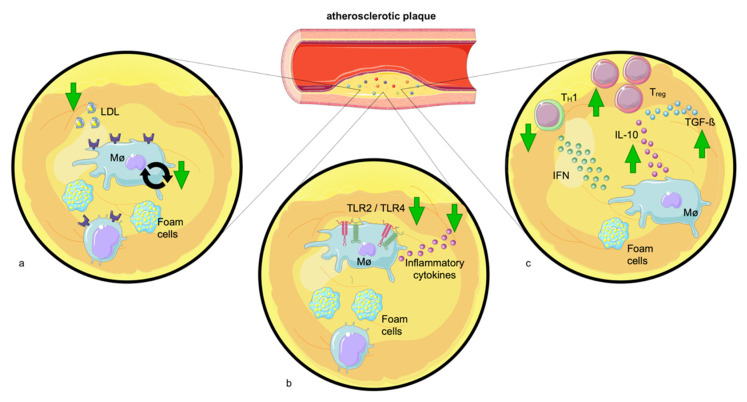Figure 3.
Exercise attenuates the pro-inflammatory environment of atherosclerotic plaques. (a) Exercise lowers LDL levels and may hence decrease LDL-induced plaque macrophage proliferation. (b) Physical exercise decreases Toll-like receptors (TLRs) −2 and −4 levels. The reduction in TLR expression diminishes the release of pro-inflammatory cytokines by plaque macrophages. (c) Exercise elevates the number of immunomodulatory TREG cells which promote plaque stability producing interleukin-10 (IL-10) and transforming growth factor (TGF-β). Additionally, physical exercise reduces the quantity of TH1 cells which activate macrophages by interferon-gamma (IFN-γ) production.

